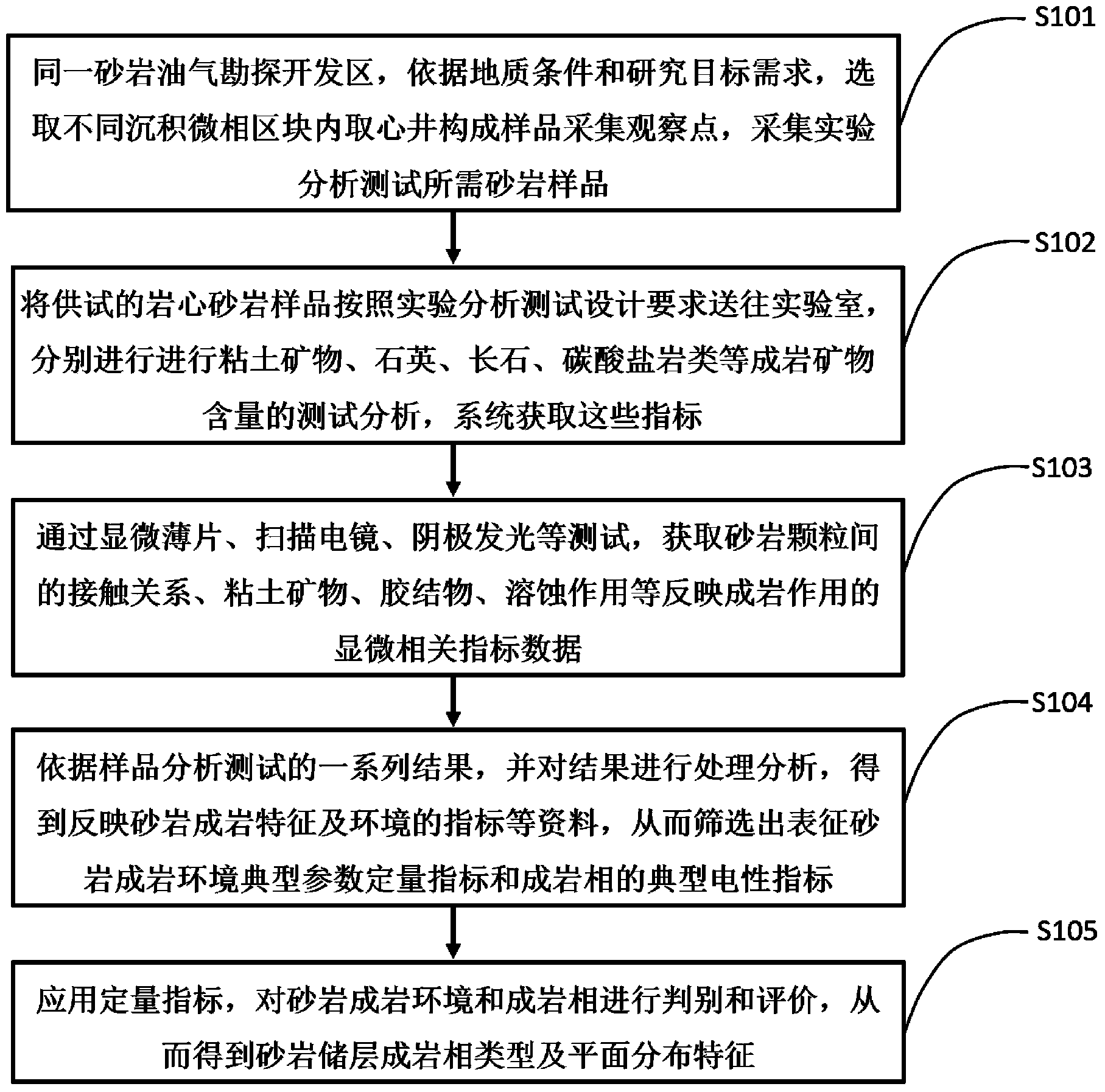Method for quantitatively expressing diagenetic logging facies of sandstone reservoir
A quantitative characterization and logging facies technology, which is applied in the field of oil and gas exploration and development design in sandstone reservoirs, can solve the problems of favorable block prediction accuracy, low exploration and development success rate, and high exploration and development costs, so as to improve prediction accuracy, improve Evaluate efficiency and improve the effect of success rate
- Summary
- Abstract
- Description
- Claims
- Application Information
AI Technical Summary
Problems solved by technology
Method used
Image
Examples
Embodiment 1
[0035] Embodiment 1: concrete steps are:
[0036] Step 1: In the same oil and gas exploration and development block, according to geological conditions and research objectives, core wells in different sedimentary microfacies blocks are selected to form sample collection and observation points. For example, a sandstone reservoir in a certain research area has sedimentary microfacies development There are underwater distributary channels, mouth bars, sheet sand, etc., and there are core samples in each microfacies, and sandstone samples required for experimental analysis and testing are collected from these samples; systematically observe and describe the cores of coring wells , to determine the sedimentary microfacies type and sequence of the sandstone reservoir;
[0037] Step 2: Use geochemical, X-ray diffraction and other experimental equipment to test the content of clay minerals, quartz, feldspar, and carbonate rocks in the collected sandstone samples by sedimentary microfa...
Embodiment 2
[0045] Embodiment 2, concrete steps of the present invention are:
[0046] The first step is to systematically observe and describe the core data of all coring wells in the research area, determine the sedimentary microfacies type and sequence of the sandstone reservoir, and carry out systematic sampling according to the conventional core analysis test sampling standard and the standard of the present invention;
[0047] In the second step, the collected sandstone samples are divided into sedimentary microfacies to test the content of clay minerals, quartz, feldspar, carbonate rocks, etc., and obtain relevant index data of sandstone samples;
[0048] In the third step, the collected sandstone samples are subjected to microscopic thin section, scanning electron microscope, cathodoluminescence and other tests to obtain the contact relationship between sandstone particles, clay minerals, cement, dissolution and other micro-related index data reflecting diagenesis;
[0049] The fo...
PUM
 Login to View More
Login to View More Abstract
Description
Claims
Application Information
 Login to View More
Login to View More - R&D
- Intellectual Property
- Life Sciences
- Materials
- Tech Scout
- Unparalleled Data Quality
- Higher Quality Content
- 60% Fewer Hallucinations
Browse by: Latest US Patents, China's latest patents, Technical Efficacy Thesaurus, Application Domain, Technology Topic, Popular Technical Reports.
© 2025 PatSnap. All rights reserved.Legal|Privacy policy|Modern Slavery Act Transparency Statement|Sitemap|About US| Contact US: help@patsnap.com

